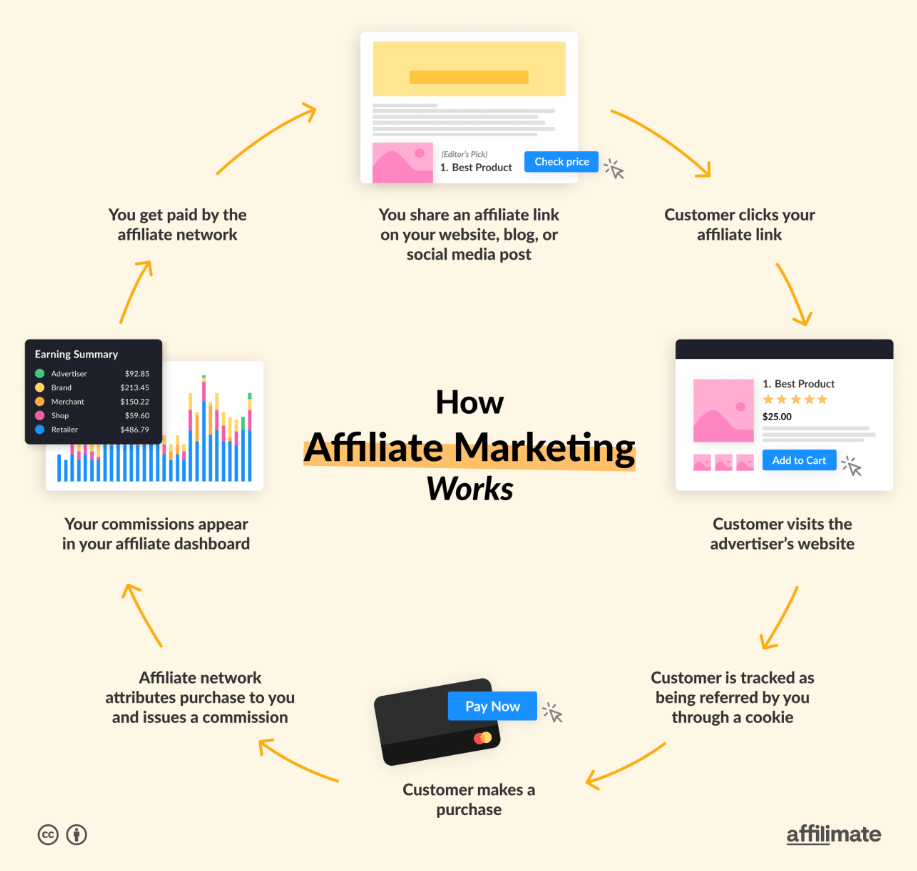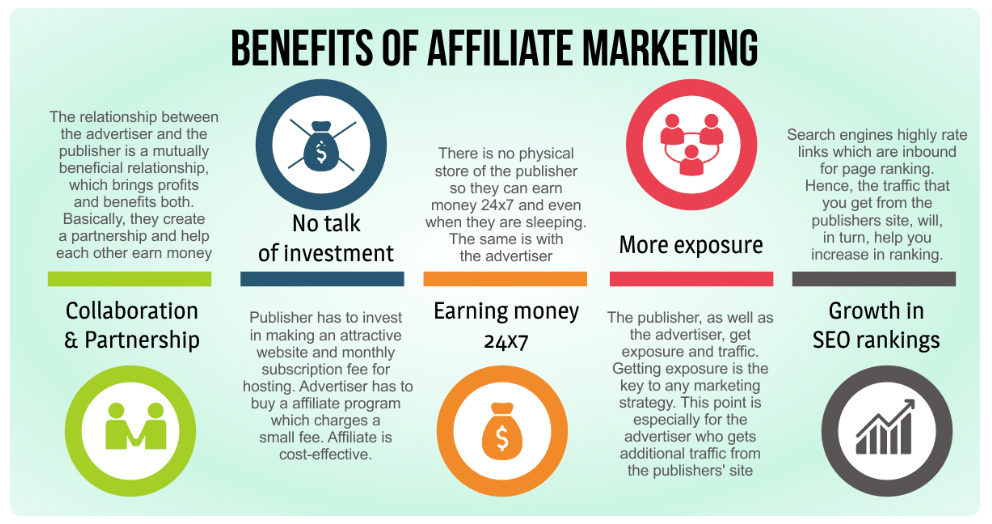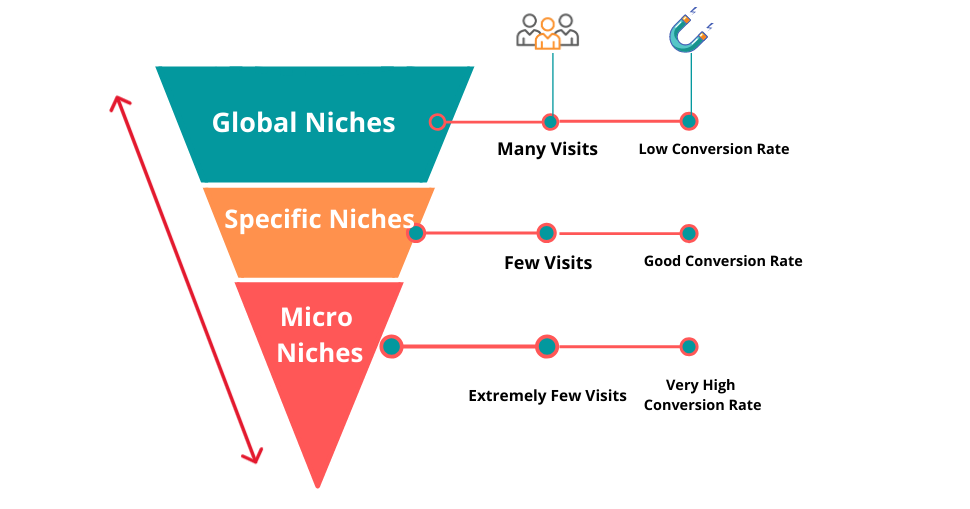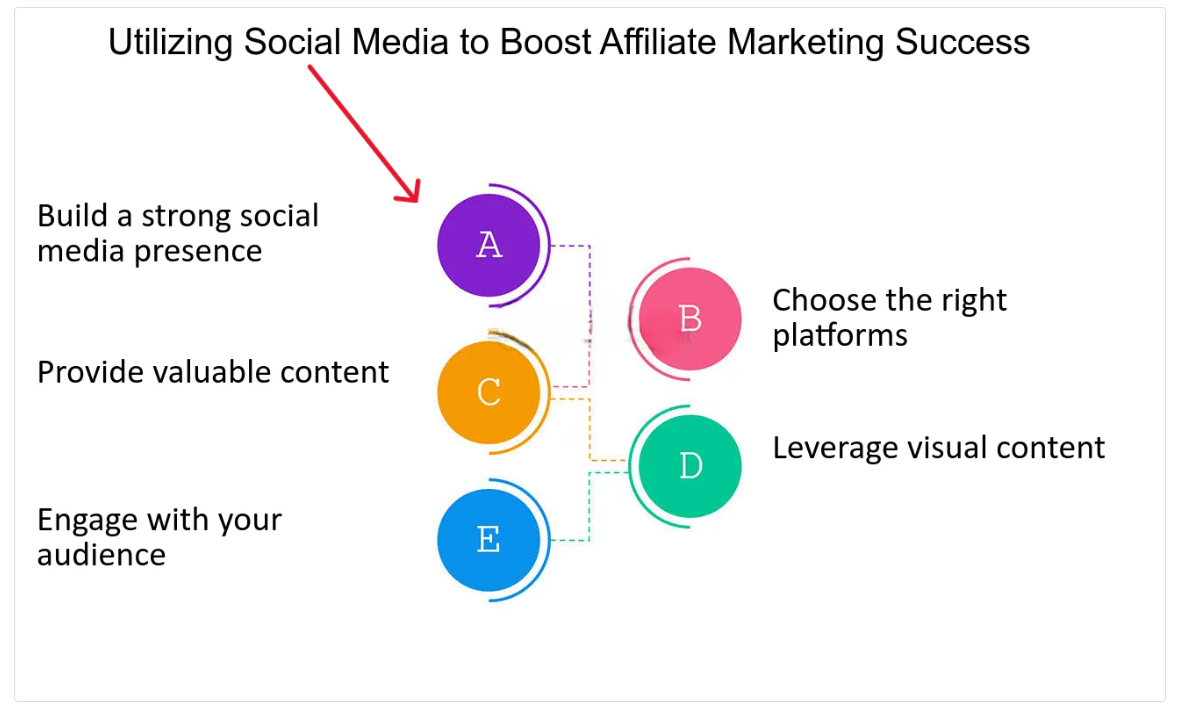Did you know the affiliate marketing industry is set to hit $18.7 billion by 2026? This shows the huge potential for those wanting to dive into affiliate marketing. This guide is perfect for beginners who want to learn affiliate marketing step by step or those with some experience, offering a clear path into the affiliate marketing world.
Affiliate marketing is a great way to earn money without much effort. With top earners making $53,290 a year, it’s clear why many are interested. This guide covers everything from the basics to successful strategies for 2025.
Starting your affiliate marketing journey means learning about picking the right niche and finding profitable programs. You’ll also discover how to make engaging content. Plus, we’ll share tips on promoting your work, using social media, and tracking your progress for success.
Key Takeaways
- Affiliate marketing industry expected to reach $18.7 billion by 2026
- The average annual income for affiliate marketers is $53,290
- Various payment models are available: pay-per-sale, click, lead, and action
- Low-cost, low-risk entry point for beginners in marketing
- Potential for substantial earnings with high-ticket items and hybrid commission structures
Understanding Affiliate Marketing Basics
Affiliate marketing is a great way to make money online. In 2023, U.S. businesses spent $8.2 billion on it. By 2026, this amount is expected to jump to $18.7 billion. Let’s explore the basics of affiliate marketing and see how it works.
What is Affiliate Marketing?
Affiliate marketing is a partnership where you promote products for other companies. When someone buys through your link, you get a commission. It’s good for both sides. Companies get more customers, and you earn from your referrals.
Key Players in Affiliate Marketing
There are three main groups in affiliate marketing:
- Merchants: Companies that create products or services
- Affiliates: Marketers who promote these products
- Consumers: People who buy the products
How Affiliate Marketing Works
Affiliate marketing is simple. You pick products to promote, share your affiliate links, and earn from sales. For instance, Amazon pays up to 10% commission. Programs like REI offer 5% with a 15-day tracking period.

| Program | Commission Rate | Cookie Duration |
|---|---|---|
| Amazon Associates | 1-4.5% | 24 hours |
| REI | 5% | 15 days |
| Direct Company Programs | 5-20% | Varies |
To begin, look for the best affiliate networks for beginners. Popular choices include CJ, ClickBank, and ShareASale. Remember, success takes time and effort. New affiliates can earn about $636 a month, but with experience, this can increase a lot.
Benefits of Becoming an Affiliate Marketer
Affiliate marketing is a great way to start an online business. It lets you make money even when you’re not working. This makes it perfect for entrepreneurs and those looking for extra income.
Getting into affiliate marketing is easy. You don’t need a lot of money or special skills to start. This ease of entry has led to many success stories, encouraging others to try it.
With affiliate marketing, you can pick what you want to promote. Choose products or services you know and love. This makes your marketing more real and effective.
| Benefit | Description |
|---|---|
| Low Risk | Minimal upfront costs compared to traditional businesses |
| Scalability | Potential for significant income growth as your audience expands |
| Flexibility | Work from anywhere, anytime |
| Diverse Income Streams | Promote multiple products across various niches |
The affiliate marketing industry is growing fast, with a 7.7% annual growth rate from 2023 to 2030. More brands are seeing the value in affiliate partnerships, with 83% of marketers using them to increase brand awareness.
Starting your affiliate marketing journey takes time and effort. It requires hard work, planning, and learning. But with persistence and the right strategy, you can succeed and build a strong online business.
Learn Affiliate Marketing Step by Step
Starting your journey in affiliate marketing can be exciting and rewarding. Let’s break down the process into manageable steps to help you succeed.
Choose Your Affiliate Niche
Selecting the right niche is crucial. Think about what you’re interested in and what you know well. Pick a topic you love and that has a good market. This way, you’ll stay motivated and make content your audience will love.
Research Affiliate Programs
After picking your niche, it’s time to research affiliate programs. Look for programs that match your audience’s interests. Compare things like commission rates, payment terms, and how long cookies last. Good places to start are Amazon Associates, ShareASale, and ClickBank.
Create a Website or Blog
Your website is your online home base. Learning how to create your affiliate website is key. Choose a platform like WordPress, pick a professional theme, and start building. Make sure your site is easy to use and looks good.
Produce Valuable Content
Content is very important in affiliate marketing. Write blog posts, product reviews, and tutorials that help your readers. Always be honest about your affiliate links to gain your audience’s trust.
Drive Traffic to Your Site
Getting visitors to your site is key. Use SEO to rank better on search engines. Be active on social media to grow your audience and send them to your site. Email marketing can also help you promote your affiliate links to your followers.
“Success in affiliate marketing may take months to achieve and patience is crucial.”
Remember, building a successful affiliate marketing business takes time and hard work. Stay focused, keep learning, and adjust your plans as you go. With persistence and the right approach, you can build a successful affiliate marketing venture.
Selecting the Right Affiliate Products
Choosing the right affiliate marketing programs is key to your success. With 81% of advertisers working with affiliate partners, there are many opportunities. Look for programs that match your niche, meet your audience’s needs, and offer good earnings.
Begin by finding products that fit your brand and appeal to your followers. Use tools like Google Trends to spot popular items in your area. Since 88% of people trust influencers, choose products you truly believe in.
When checking out programs, consider their commission rates, how long cookies last, and the merchant’s reputation. High-quality products with good conversion rates can increase your earnings, even if they’re not expensive.
| Factor | Importance |
|---|---|
| Brand Ethics | High |
| Personal Experience | Essential |
| Audience Fit | Critical |
| Commission Rate | Important |
| Cookie Duration | Valuable |
To promote your affiliate products well, make content that highlights their benefits. Use social media, email marketing, and SEO to reach your audience. Keep an eye on your results and tweak your strategy for better outcomes.
Building Your Affiliate Marketing Strategy
Creating a solid affiliate marketing strategy is crucial for success. Start by setting clear goals and making a content plan. Also, use SEO best practices to lay a strong foundation for your efforts.
Setting Goals and KPIs
First, define specific, measurable goals for your affiliate marketing. These could be targets for monthly visitors, conversion rates, or revenue. Use key performance indicators (KPIs) like click-through rates and earnings per click to track your progress.
Developing a Content Plan
Make a content calendar that matches your audience’s interests and needs. Include product reviews, comparison articles, and guides to offer value. With 80% of publishers running affiliate marketing, quality content is key to standing out.
Implementing SEO Best Practices
Boost your site’s visibility with SEO for affiliate marketing. Focus on keyword optimization and creating quality content. Use tools like Ahrefs to find niches with good traffic but less competition. Here are some tips to improve your search engine rankings:
- Optimize your content for relevant keywords
- Create high-quality, informative content
- Build backlinks from reputable sources
- Improve your site’s loading speed
- Ensure your website is mobile-friendly
By using these strategies and SEO best practices, you’ll be on your way to a successful affiliate marketing business.
Effective Promotion Techniques for Affiliate Marketers
Promoting affiliate products needs creativity and strategy. To get more traffic to your site, make content that your audience will love. Use product reviews, comparison articles, and how-to guides to help your marketing.
Try different content types to reach more people. Blog posts, videos, and infographics are great for showing off affiliate products. The goal is to give real value to your readers and include your affiliate links naturally.
Social media is key for promoting products. With 21% of people aged 18-54 buying things because of influencers, platforms like Instagram and YouTube are great for marketers.
Email marketing is also powerful for affiliate success. Build an email list and send out valuable content, sometimes with your affiliate offers. This direct way of reaching people can help increase your sales.
- Create product reviews and comparison articles
- Develop how-to guides and tutorials
- Utilize various content formats (blog posts, videos, infographics)
- Leverage social media platforms
- Implement email marketing campaigns
Success in affiliate marketing is about building trust with your audience. Always focus on giving value and only promote products you’ve tried and think will help your followers. This approach is crucial for long-term success in affiliate marketing.
Leveraging Social Media for Affiliate Success
Social media has changed the game for affiliate marketing. Over 1.2 million websites use OptinMonster’s software. This shows how vital social platforms are for success in affiliate marketing.
Choosing the Right Platforms
Choosing the right social media channels is key. Each platform reaches different people:
- Instagram, Pinterest, and TikTok: Great for B2C sales and products with lots of images
- LinkedIn: Most popular among people with a college degree
- YouTube: The second biggest search engine, ideal for showing off products in detail
- Twitter: Good for tech-savvy folks because of its longer posts
Creating Engaging Social Media Content
To win in social media for affiliate marketing, make content that speaks to your audience:
- Use visuals: 80% of weekly Pinterest users find new brands here
- Make content for each platform: Short videos for TikTok, detailed posts for Twitter
- Use different formats: Stories, Reels, and posts on Instagram for fun promotions
Building a Following and Engaging with Your Audience
Building an audience takes hard work:
- Post often and use the right hashtags
- Talk to followers in comments and messages
- Give out special coupon codes to encourage unique content
- Use platform insights to improve your plan
Success in affiliate marketing on social media means offering value, building trust, and making real connections with your audience.
| Platform | Best For | Key Feature |
|---|---|---|
| Visual niches (fashion, beauty, travel) | Various content formats | |
| DIY, crafts, home decor | Direct affiliate links allowed | |
| Niche audiences | Facebook groups | |
| TikTok | Young audience | Short, engaging videos |
Email Marketing Strategies for Affiliate Marketers
Email marketing is a big win for affiliate marketers. It has an average ROI of 122%, making it a key tool for growing your affiliate marketing funnel. Let’s dive into some top strategies to help you succeed.
Start by building a strong email list. Offer valuable lead magnets to draw in subscribers. Then, segment your list for targeted promotions. Personalized emails are 26% more likely to get opened, so segmenting is key for better engagement.
Make your content engaging and valuable. It should include affiliate offers subtly. Use automation to help leads move through your funnel. Keeping in touch regularly helps build trust with your audience.
When picking email marketing tools, look at MailChimp, Drip, AWeber, or GetResponse. These tools support affiliate links and have features like customizable templates, autoresponders, and analytics to improve your campaigns.
| Email Marketing Metric | Average Performance |
|---|---|
| Return on Investment (ROI) | 122% |
| Click-Through Rate | 2.6% |
| Potential Earnings | Up to $42 per $1 spent |
Email marketing for affiliate marketing is more than just selling. It’s about building relationships. By offering value and personalizing your messages, you’ll grow a loyal subscriber base. This group is more likely to engage with your affiliate offers.
Tracking and Analyzing Your Affiliate Performance
Success in affiliate marketing means tracking key metrics and using the right tools. By keeping an eye on your performance, you can make smart choices to better your strategies. This will help increase your earnings.
Key Metrics to Monitor
To see how well you’re doing in affiliate marketing, focus on these important metrics:
- Click-through rate (CTR)
- Conversion rate
- Revenue
- Return on investment (ROI)
- Number of clicks and conversions
Tools for Tracking Affiliate Sales
Use these Affiliate Marketing Tracking Software Tools to keep an eye on your performance:
| Tool | Purpose |
|---|---|
| Google Analytics | Track website traffic and user behavior |
| Affiliate Network Dashboards | Monitor clicks, conversions, and earnings |
| Dedicated Affiliate Software | Customize tracking and reporting |
Interpreting Data and Making Improvements
Look at your data to find out which content and products work best. Use A/B testing to make your campaigns better. Set clear goals and KPIs to keep track of your progress and success.
Always be on the lookout for fraud by watching for any suspicious activity. Talk regularly with your affiliates, sharing data and offering help to keep your program successful.
By getting good at tracking and using the best tools, you’ll be ready to fine-tune your strategies. This will help you make the most of your affiliate marketing efforts.
Legal and Ethical Considerations in Affiliate Marketing
Understanding the legal and ethical side of affiliate marketing is key to doing well over time. By sticking to the best practices, you gain the trust of your audience and dodge common mistakes. The Federal Trade Commission (FTC) says you must be open about your ties to the products or services you promote.
A big mistake is not being clear about your financial ties. Make sure to tell consumers about how you’re connected to the products. Keep these disclosures up to date to show you’re serious about being open and following the rules.
Privacy laws like GDPR and CCPA are important for keeping user data safe. Only ask for the info you need to respect people’s privacy. This not only builds trust but also shows you’re serious about doing things right.
“Ethical affiliate marketing is essential for sustainable growth and long-term success in this competitive field.“
Don’t use trademarks or copyrighted stuff without permission. Always get the okay before using any protected content to avoid legal issues. Being ethical in affiliate marketing means you’ll get more people to buy, attract better customers, and find more partners.
- Disclose affiliate relationships clearly
- Respect user privacy and data protection laws
- Obtain permission for trademarked or copyrighted material
- Provide honest recommendations and avoid deceptive practices
Following these ethical rules will help you build a loyal following and protect your reputation. This way, you’ll grow sustainably and stand out in the competitive affiliate marketing world.
Conclusion
Learning affiliate marketing can lead to big success. The best way to get good at it is by doing it and keeping up with trends. With the market expected to hit $40 billion by 2031, there’s a lot of room for growth and making money.
Starting your affiliate marketing journey means picking the right programs. Amazon Associates is great for beginners because it has so many products. As you get better, check out Awin or Commission Junction for more chances to make money across 180 countries. Remember, you can earn between 5% to 30% commission, so pick programs that fit your niche and goals.
Best AI Tools for Affiliate Marketing To Automate Your Processes and Boost Your Earnings
To make more money, make sure your content is helpful and interesting to your readers. Use different ways to earn like Pay Per Click, Pay Per Sale, or Pay Per Lead to earn in more ways. With hard work and a good plan, many people make over $10,000 a month. By offering real value and earning your audience’s trust, you’ll be on your way to affiliate marketing success.
FAQs – Learn Affiliate Marketing Step by Step
What is affiliate marketing?
Affiliate marketing is a way to earn money by promoting products or services. You share special links to these products. When someone buys through your link, you get a commission.
Who are the key players in affiliate marketing?
The main people involved are the merchant, the affiliate, and the customer.
How does affiliate marketing work?
Affiliates share special links to products. When a customer buys through that link, the affiliate gets a commission.
What are the benefits of becoming an affiliate marketer?
It’s easy to start, you can earn money while you sleep, and you can choose what products to promote. It also offers a chance for big income growth.
How do I choose a niche for affiliate marketing?
Pick a niche you’re interested in and know a lot about. Make sure there’s a demand for it and not too much competition.
Where can I find profitable affiliate programs?
Look for them on affiliate networks like ShareASale or Commission Junction. Check the products’ relevance, how much you’ll earn, and the company’s reputation.
How do I create an affiliate website or blog?
Start by building a website or blog. Pick a domain name, choose a hosting service, and use a system like WordPress to set it up.
How can I drive traffic to my affiliate site?
Use SEO, social media, emails, and ads to bring people to your site.
What are effective promotion techniques for affiliate products?
Good ways include writing reviews, making comparisons, tutorials, and guides. Use different types of content like blogs, videos, and infographics.
How can I leverage social media for affiliate marketing?
Pick platforms that fit your niche and audience. Share valuable content that includes affiliate links. Grow your following by posting regularly and interacting with your followers.
What email marketing strategies should I use for affiliate marketing?
Build an email list with free offers. Send emails that are helpful and include affiliate links. Use automation to help subscribers move through your marketing steps.
How can I track and analyze my affiliate performance?
Use tools like Google Analytics and affiliate network dashboards to watch your progress. Look at click-through rates, conversion rates, and earnings. This will help you see what’s working and what’s not.
What legal and ethical considerations should I keep in mind for affiliate marketing?
Always tell your audience about your affiliate links. Don’t make false claims about products. Keep user privacy safe and follow the law. Be open and honest in all you do.








